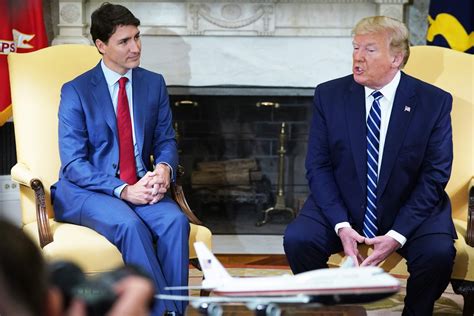Hours after his inauguration, President Trump made a striking announcement regarding the imposition of 25% tariffs on products from both Canada and Mexico. This bold move, set to take effect as early as February 1st, reflects the administration’s stance on addressing concerns around immigration and trade practices.
President Trump’s Remarks
During a momentous event at the White House, President Trump underscored the rationale behind these potential tariffs. He expressed that such measures were being considered due to the perceived laxity in border control by both neighboring countries. The President’s statement highlighted a sense of urgency in implementing these tariffs to protect American interests.
As news of these proposed tariffs circulated, various stakeholders began assessing the possible implications on cross-border trade dynamics. The global economic landscape was poised for potential shifts in response to this decisive stance taken by the new administration.
Economic Ramifications
Tariffs serve as a crucial tool in regulating international trade by imposing additional costs on imported goods. With President Trump signaling an assertive approach through tariff implementation plans, markets braced themselves for adjustments that could impact supply chains and consumer prices. Such actions often trigger a ripple effect across sectors, influencing investment decisions and market sentiments.
The looming prospect of heightened tariffs stirred reactions within diplomatic circles as well. Concerns emerged over possible retaliatory measures from affected nations and uncertainties surrounding future trade negotiations. Analysts began dissecting the nuances of this development to gauge its broader consequences on global commerce.
Expert Insights
Experts weighed in on the significance of these proposed tariffs within the broader context of US foreign policy and economic strategy. The underlying motivations driving such decisions were scrutinized for their alignment with national interests and diplomatic objectives. Speculation arose regarding potential scenarios that could unfold based on how key stakeholders responded to these policy shifts.
Moreover, discussions surfaced around the interconnected nature of modern economies and how protectionist measures could reshape established trade frameworks. Insights from economists shed light on how tariff impositions might influence market behaviors and recalibrate competitive dynamics between nations engaged in commercial exchanges.
Public Reaction and Industry Response
The public discourse surrounding these tariff deliberations captured diverse perspectives ranging from cautious optimism to outright skepticism. Businesses operating within affected sectors initiated contingency planning while closely monitoring unfolding developments for strategic insights. Industry associations voiced concerns about disruptions that could arise from sudden changes in trade policies impacting their operations.
In parallel, government representatives engaged in dialogues aimed at mitigating any potential tensions arising from tariff escalations. Advocacy efforts sought avenues for constructive engagements to address underlying issues prompting such drastic measures by fostering mutual understanding among trading partners.
Looking Ahead
As February approached, all eyes remained fixed on the evolving narrative surrounding US trade relations with Canada and Mexico under President Trump’s leadership. The intricate dance between economic imperatives, political considerations, and diplomatic intricacies painted a complex tableau awaiting further chapters to unfold.
In conclusion, the saga of impending tariffs underscored not only immediate economic ramifications but also deeper implications concerning bilateral ties among nations navigating turbulent waters of global trade dynamics.

